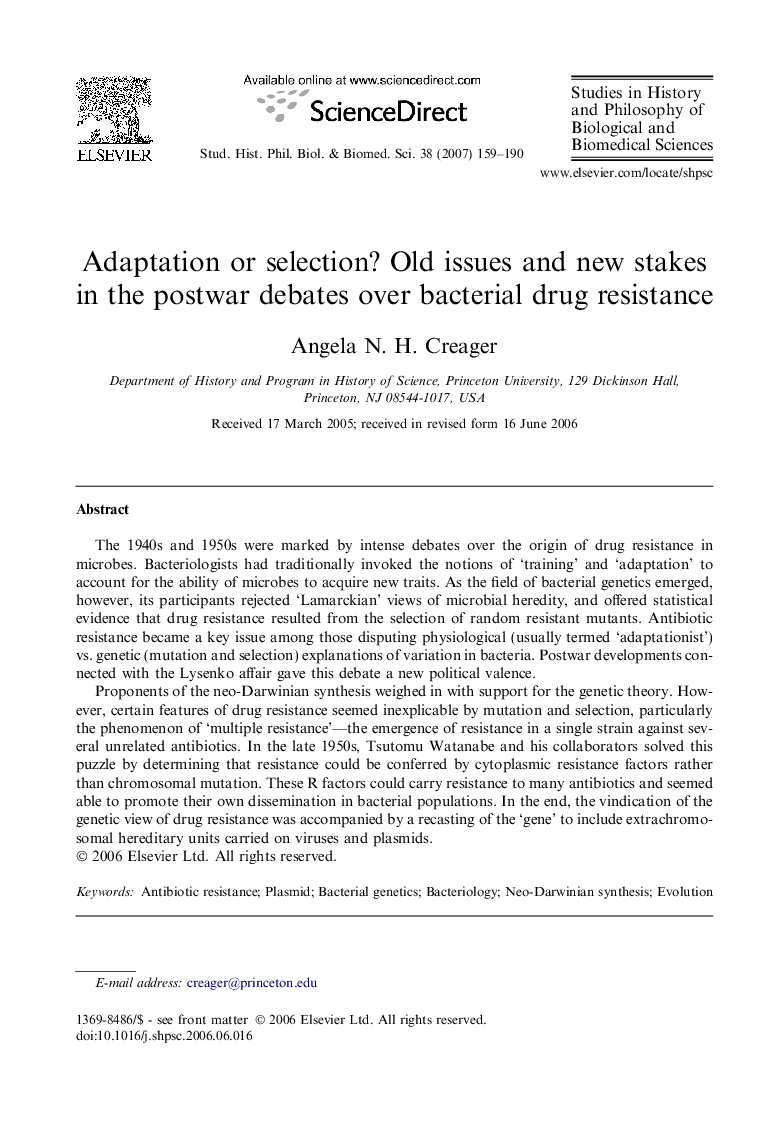| Article ID | Journal | Published Year | Pages | File Type |
|---|---|---|---|---|
| 1162257 | Studies in History and Philosophy of Science Part C: Studies in History and Philosophy of Biological and Biomedical Sciences | 2007 | 32 Pages |
The 1940s and 1950s were marked by intense debates over the origin of drug resistance in microbes. Bacteriologists had traditionally invoked the notions of ‘training’ and ‘adaptation’ to account for the ability of microbes to acquire new traits. As the field of bacterial genetics emerged, however, its participants rejected ‘Lamarckian’ views of microbial heredity, and offered statistical evidence that drug resistance resulted from the selection of random resistant mutants. Antibiotic resistance became a key issue among those disputing physiological (usually termed ‘adaptationist’) vs. genetic (mutation and selection) explanations of variation in bacteria. Postwar developments connected with the Lysenko affair gave this debate a new political valence.Proponents of the neo-Darwinian synthesis weighed in with support for the genetic theory. However, certain features of drug resistance seemed inexplicable by mutation and selection, particularly the phenomenon of ‘multiple resistance’—the emergence of resistance in a single strain against several unrelated antibiotics. In the late 1950s, Tsutomu Watanabe and his collaborators solved this puzzle by determining that resistance could be conferred by cytoplasmic resistance factors rather than chromosomal mutation. These R factors could carry resistance to many antibiotics and seemed able to promote their own dissemination in bacterial populations. In the end, the vindication of the genetic view of drug resistance was accompanied by a recasting of the ‘gene’ to include extrachromosomal hereditary units carried on viruses and plasmids.
